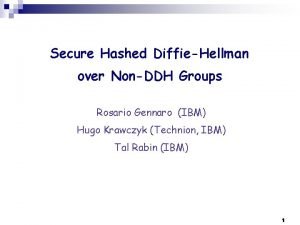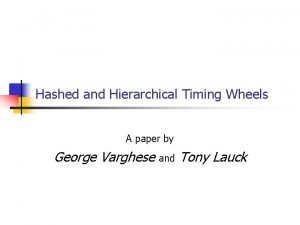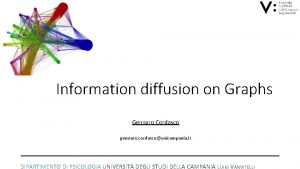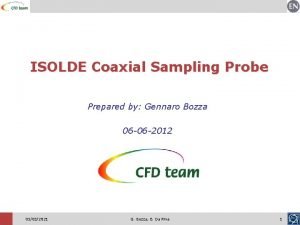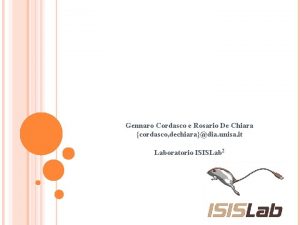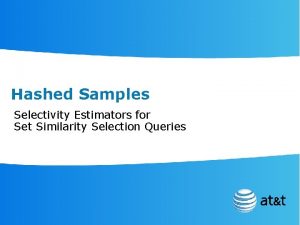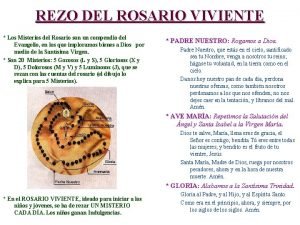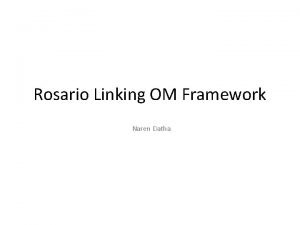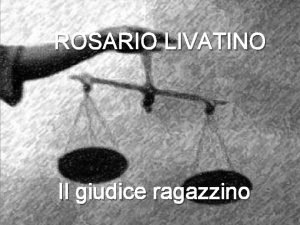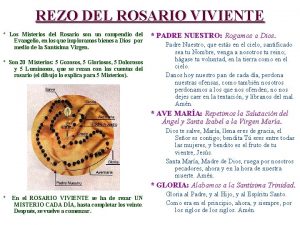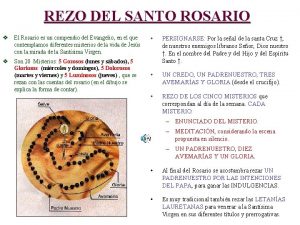Secure Hashed DiffieHellman over NonDDH Groups Rosario Gennaro



















- Slides: 19

Secure Hashed Diffie-Hellman over Non-DDH Groups Rosario Gennaro (IBM) Hugo Krawczyk (Technion, IBM) Tal Rabin (IBM) 1

Diffie-Hellman n Cyclic group G, generator g, (ga, gb) -> gab n Main applications: key exchange, encryption n DDH: gab random element in G (even given ga, gb) ¨ (ga, gb, gab) n (ga, gb, gc), a, b, c R [ord(G)] Are random group elements what we are interested in as output from DH? ¨ Not really. What is usually needed: A random key K in {0, 1}k (e. g. k=128) ¨ True in the case of KE as well as encryption (eg [BJN 00]) 2

From random group elements to random keys (strings ( n The solution: hash gab into a k-bit string n DDH hashing gab is computationally equivalent to hashing a random element from G n n Question: Which hash functions can convert the uniform distribution on G into the uniform dist’n on {0, 1}k? Answer [leftover hash lemma]: “ 2 wise-independent” hash functions will map G almost uniformly over {0, 1}k è if G is DDH then K=H(gab) is pseudorandom Note: length of K log|G|-160 3

G {0, 1}1024 |G|=2500 H {0, 1}128 4

Relaxing DDH n n Question: given that we need to hash gab anyway to achieve a pseudo-random output, do we still need to work over a DDH group G? Note that the DDH requirement is not for free: e. g. , it disqualifies working over Zp* !! ¨ DDH does not hold on any group with small divisors n For example: in Zp* can distinguish QRs from non-QRs n DDH believed to hold in large prime order groups But, is it really insecure to do (hashed) DH over non. DDH groups, e. g. over. Zp* ? 5

Our Answer Q: Is it really insecure to do (hashed) DH over non-DDH groups, e. g. over. Zp* ? A: Once you hash you can do secure DH over many non-DDH groups, including. Zp* P L A N: § Relax the notion of DDH: t-DDH § Show that hashed DH is secure over t-DDH groups (for large enough t) § Show there are interesting examples of t-DDH groups § In particular: hashed DH over Zp* (for random p) is secure 6

Relaxing DDH n n Since we are hashing gab then we do not need gab to be totally random in G but contain enough randomness that a good hash function can extract More precisely, we need to extract from gab “all its computational entropy” ¨ n statistical entropy is 0 since gab is fully determined by ga and gb “Def’n”: G is t-DDH if for a, b R {1. . |G|} the DH value gab has “t bits of computational entropy” even when ga and gb are given More formally… 7

min-entropy n A probability distribution X over a set S has min-entropy t if for all s S, Prob. X(s) 2 -t ¨ Not all elements necessarily equi-probable, but no single element is too “heavy” Uniform Distribution Min-entropy t Computational min-entropy t computationally indisting’ble from a distribution with min-ent t 8

t-DDH: A Relaxation of DDH n G satisfies the t-DDH assumption if for each pair a, b there exists a distribution X(a, b) over {1. . |G|} such that 1. X(a, b) has min-entropy t 2. (ga, gb, gab) (ga, gb, gc), a, b R {1. . |G|}, c R X(a, b) (i. e. , gab has t bits of “computational entropy” even after seeing ga, gb) Note: existence vs. samplability 9

t-DDH: A Useful Relaxation n n Why? Because if G is t-DDH then hashing gab to <t bits provides a pseudorandom output, namely: Leftover Hash Lemma + t-DDH ¨ Let G be t-DDH and H be a pairwise independent hash family with range {0, 1}t-2 e ¨ Then the distributions (h, ga, gb, h(gab)) and (h, ga, gb, r) for a, b R {1. . |G|}, h RH and r R{0, 1}t-2 e are 2 -e-indistinguishable n The larger t the more pseudorandom bits one can extract 10

G {0, 1}1024 X(a, b) |G|=2500 t=300 H H {0, 1}128 G {0, 1}1024 The larger t the more pseudorandom bits one can extract {0, 1}128 11

Examples of t-DDH groups n G DDH For all a, b: X(a, b) = {1. . |G|} with uniform distribution (here t=log |G|) ¨ i. e. , G is DDH iff G is t-DDH with t=log |G| n Zp*, p=2 q+1. If a or b are even then X(a, b)={2, 4, …, 2 q} (uniform dist’n); if both a and b odd then X(a, b)={1, 3, …, 2 q-1} (uniform dist’n) ¨ i. e. , in this case: Zp* is |q|-DDH (X(a, b) has min-ent |q|) 12

t-DDH: A Useful Relaxation? n Are there “interesting examples” of t-DDH groups, i. e. non-DDH groups that are t-DDH for large t? ¨ Beyond n the “toy case” Z*2 q+1 Yes. Essentially any group with a large DDH SUB -group has guaranteed large min-entropy! 13

The Max-Subgroup Theorem n For all G, G is |m|-DDH where m is the order of the maximal* DDH subgroup in G è can get the WHOLE entropy of a DDH subgroup without having to work over it (or even know it!) *More precisely… theorem holds for the disjoint DDH subgroup maximal ¨ H G is a “disjoint subgroup” if (|H|, |G|/|H|)=1 (e. g. , |G|=2 32 52, then G 18 is disjoint but G 90 is not) ¨ The theorem as written above holds if all the large prime-power subgroups of G are DDH (or if |G| is square-free) 14

Combining Entropy n By the Max-Subgroup Theorem: ¨ we can get the WHOLE entropy of a DDH subgroup without having to work over it n Moreover: we can get the COMBINED entropy of ALL large prime-power subgroups ¨ E. g. p-1=s·q 1·q 2, |q 1|=|q 2|=160 (q 1, q 2 not divide s) then Zp* is 320 -DDH 15

Direct Product Characterization n A cyclic group G is DDH if and only if its prime-power subgroups are DDH all ¨ If G is DDH then all its subgroups are DDH (thus, DDH on large prime-order groups is a “minimal assumption”) ¨ If G 1, G 2 are DDH groups of disjoint order then G 1 x. G 2 is DDH. i. e. (|G 1|, |G 2|)=1 Example: if p-1=s·q 1·q 2, |q 1|=|q 2|=160, and s is not divisible by q 1 and q 2 then Zp* is 320 -DDH (max subgroup + DPC theorems) 16

Application to Zp* for random p n n Traditionally, working over Zp* requires knowledge of the factors of p-1 ¨ either for choosing a generator of Zp* (full factorization) ¨ or for choosing a generator of large order q for q/p-1 Our results allow to use Zp* for random p w/o any knowledge of the factors of p-1 * ¨n. Choose use as a generator. That’s it! R Zp and Honestg users need notg know anything about the n It is guaranteed, with v. h. p. , that the subgroup G=<g> contains all factorization of p-1 large-prime order subgroups of Zp* On the other hand, thesubgroups function secure Assuming large-prime order of remains Zp* are DDH G is t-DDH for sufficiently large t eventhen if the attacker knows this factorization! n n (Max-Subgroup + Direct Product Characterization Theorems) 17

DH with short exponents n n A disadvantage of working over Zp* is that exponents are |p|-bit long. In contrast, working over Gq takes only |q|-bit exponents (e. g. , |q|=300 vs |p|=1024) Yet, a common practice (e. g. , IPsec) is to work over Zp* using exponents of length 200 (significant speed-up) Can we apply our results to the latter case? Yes, if t-DDH holds in a group G then it also holds for exponents of length s provided the discrete log problem with exponents of size s is hard in G 18

Summary n Hashed DH over non-DDH groups, ¨ Defined a DDH relaxation, t-DDH, and showed its sufficiency for hashed DH ¨ Showed how t is determined by the max DDH subgroup. Thus, hashed-DDH can use all the entropy in the DDH subgroups w/o having to know (or work over) these subgroups ¨ Proved the DDH Direct Product Characterization: G is DDH if and only if all its prime-power subgroups are DDH ¨ Illustrated applications via Zp* (w/ or w/o known factorz’n) ¨ Results preserved under short exponents ¨ Results are generic (any cyclic group) 19
 Rosario gennaro
Rosario gennaro Hashed timing wheel
Hashed timing wheel Gennaro parlato
Gennaro parlato Gennaro e giulia
Gennaro e giulia Gennaro cordasco
Gennaro cordasco Gennaro bozza
Gennaro bozza Gennaro autuori e michele del giudice
Gennaro autuori e michele del giudice Accursio gennaro
Accursio gennaro How are ethnic groups and religious groups related
How are ethnic groups and religious groups related Over the mountains over the plains
Over the mountains over the plains Siach reciting the word over and over
Siach reciting the word over and over Explain how to handing over and taking over the watch
Explain how to handing over and taking over the watch La malinche rosario marquardt
La malinche rosario marquardt Anunciar el primer misterio
Anunciar el primer misterio Rosario madre teresa de calcuta
Rosario madre teresa de calcuta Cuál es el quinto misterio glorioso
Cuál es el quinto misterio glorioso Como rezar el rosario de la paz
Como rezar el rosario de la paz Acto de contrición tradicional
Acto de contrición tradicional Micromedia unisal
Micromedia unisal Sondeos puerto del rosario
Sondeos puerto del rosario
